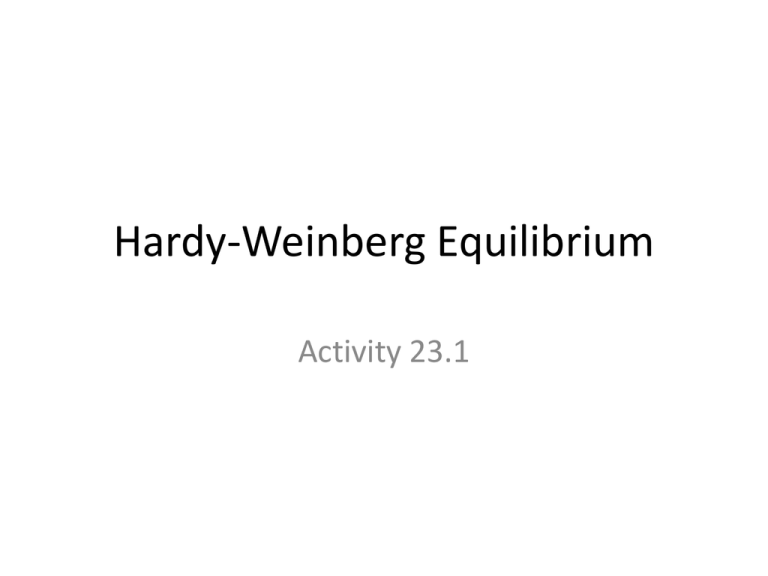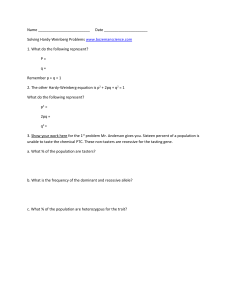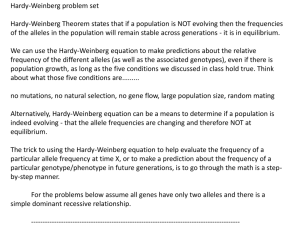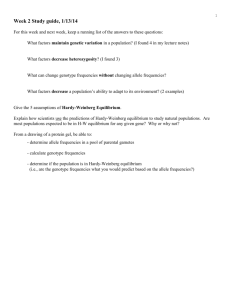Hardy-Weinberg Equilibrium
advertisement

Hardy-Weinberg Equilibrium Activity 23.1 • Allele: Alternative form of a genetic locus; a single allele for each locus is inherited from each parent. Populations & Genes • The total aggregate of genes in a population at any one time is called the population’s gene pool. • It consists of all alleles at all gene loci in all individuals of a population. • If only one allele exists at a particular locus in a population, that allele is said to be fixed in the gene pool, and all individuals will be homozygous for that gene. • If there are two or more alleles for a particular locus, then individuals can be either homozygous or heterozygous for that gene. • Each allele has a frequency in the population’s gene pool. • • • • • • • • • Five conditions must be met for a population to remain in Hardy-Weinberg equilibrium. The Hardy-Weinberg theorem describes a hypothetic population that is not evolving. However, real populations do evolve, and their allele and genotype frequencies do change over time. That is because the five conditions for nonevolving populations are rarely met for long in nature. A population must satisfy five conditions if it is to remain in Hardy-Weinberg equilibrium: 1. Extremely large population size. In small populations, chance fluctuations in the gene pool can cause genotype frequencies to change over time. These random changes are called genetic drift. 2. No gene flow. Gene flow, the transfer of alleles due to the migration of individuals or gametes between populations, can change the proportions of alleles. 3. No mutations. Introduction, loss, or modification of genes will alter the gene pool. 4. Random mating. If individuals pick mates with certain genotypes, or if inbreeding is common, the mixing of gametes will not be random. 5. No natural selection. Differential survival or reproductive success among genotypes will alter their frequencies. • • • Evolution usually results when any of these five conditions are not met. Although natural populations are rarely, if ever, in true Hardy-Weinberg equilibrium, the rate of evolutionary change in many populations is so slow that they appear to be close to equilibrium. In such cases, we can use the Hardy-Weinberg equation to estimate genotype and allele frequencies. • In each of the following scenarios, choose which assumption of the Hardy-Weinberg Law is being violated No Selection – the shorebirds are selectively taking the most visible (light) limpets Random Mating – selective mating is occurring when white by white and blue by blue mating are more common than white by blue No Migration – Mongolian invasions were more common in Eastern European countries than Western European countries. Offspring of Eastern Europeans and Mongols with blood type B led to the variability in distribution of the blood type in Europe.









